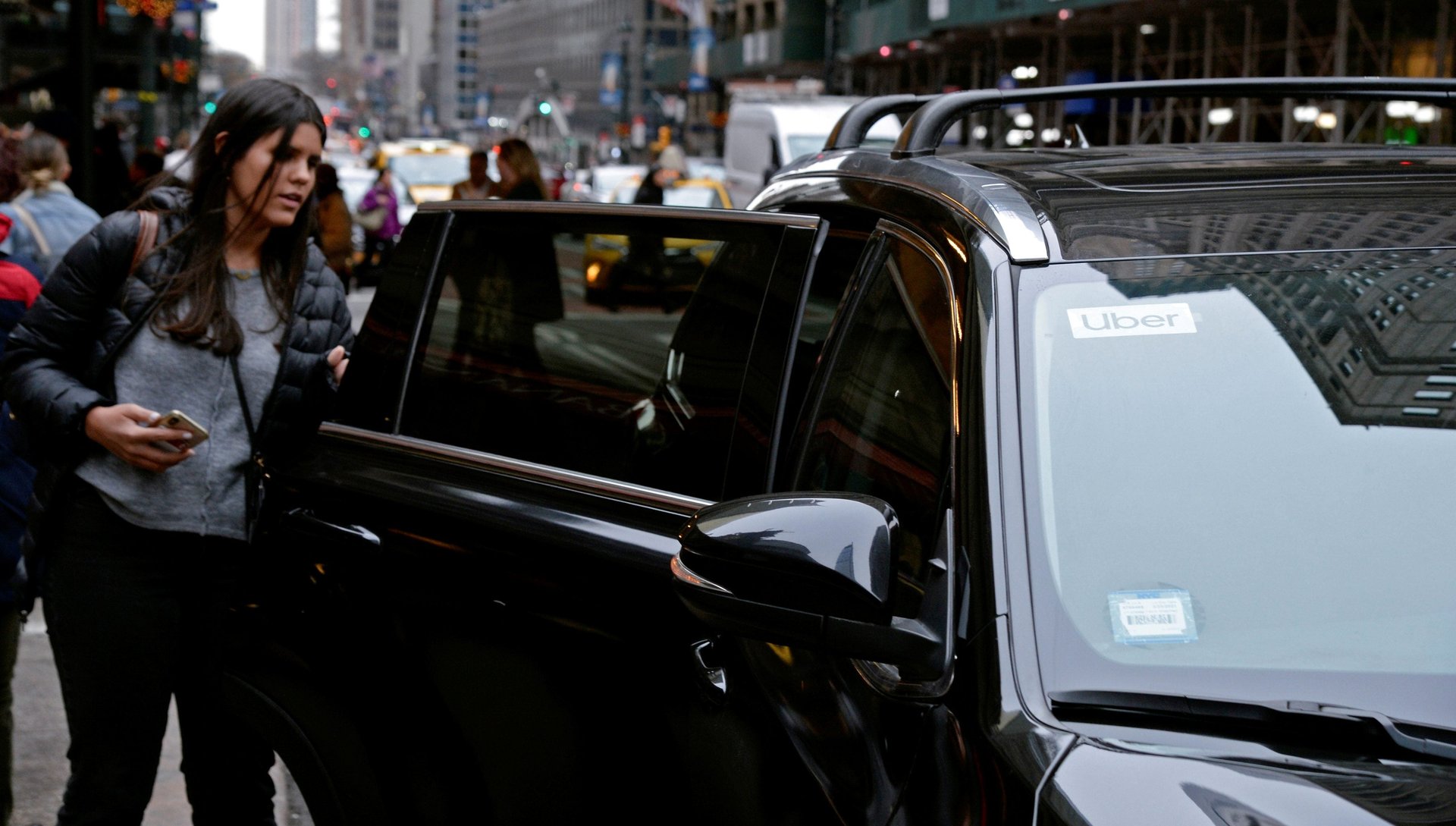Uber is going back in time to prove its drivers aren’t employees
Uber made some major changes in California last week.


Uber made some major changes in California last week.
The changes, Uber wrote in an announcement to drivers, are “to further clarify the relationship between you and your riders, and Uber’s role as a technology platform.” They came a week after a new California law, known as AB5, took effect that makes it harder to classify workers as independent contractors rather than employees.
The two biggest changes Uber is making to its business in California are:
- No more upfront pricing. Passengers will see an estimated price range rather than a set dollar figure before requesting any non-Pool ride. The final price will be calculated at the end based on time and distance. Drivers earn the fare minus Uber’s commission (“service fee”), which is capped on UberX trips at 25%. (UberXL, Comfort, SUV, and Lux trips will carry a 28% service fee.)
- The return of surge multipliers for drivers. Uber at some point replaced the multipliers drivers could earn on fares during busy (“surge”) periods with a “flat surge” system that added a fixed amount to the driver’s earnings price. Uber is now reverting to the old system of calculating surge earnings for drivers as a multiple of the fare.
Other changes in California include tweaks to rider rewards (Uber is nixing price protection on routes and flexible cancellations) and to driver incentives (“Quests,” a type of driver promotion, will earn discounts on Uber’s commission rather than a bonus).
“Due to a new state law, we are making some changes to help ensure that Uber remains a dependable source of flexible work for California drivers,” Uber told California riders in an email. “Our goal is to keep Uber available to as many qualified drivers as possible, without restricting the number of drivers who can work at a given time.”
What’s interesting about the latest set of changes is that they feel less like a step toward a new Uber than a reversion to an older one. Price estimates were the norm on Uber until the company quietly introduced upfront pricing in 2016. Upfront pricing allowed Uber to decouple what the rider paid from what the driver earned, in a way drivers suspected was favorable to Uber. That’s because drivers continued to be paid based on time and distance, but riders paid whatever number Uber quoted them. That meant Uber took a hit if the quote was too low and pocketed the difference if it was high. Uber maintained that upfront pricing was designed to break even for the company and its drivers over many trips.
Surge multipliers, similarly, are early Uber. In the beginning, the biggest Uber scandal was that it jacked up prices—some said it gouged consumers—during high-demand periods. Drivers had mixed feelings about replacing surge multipliers with the flat system, but seemed to feel multipliers were generally preferable except for short trips, when adding a flat rate to the fare could go further than putting a multiplier on an already small number.
This is the second batch of changes Uber has rolled out since California passed AB5, codifying the state’s stricter employment classification test. The first set of changes, which Uber announced in early December 2019, was focused on driver flexibility: for instance, giving drivers more information about a trip before asking them to accept. Uber said at the time that it would soon “make the fare structure more straightforward so it’s clear where your earnings and fees come from.” Uber has also pledged $30 million to a 2020 ballot initiative to fight the law.
“As a result of AB5, we’ve made a number of product changes to preserve flexible work for tens of thousands of California drivers,” an Uber spokesperson said in an emailed statement. “At the same time, we’ve put forward a progressive package of new protections for drivers, including guaranteed minimum earnings and benefits, so voters can choose to truly improve flexible work in November.”
AB5 is ultimately about control. The law is concerned that workers classified as independent contractors are genuinely independent in their jobs, and not simply controlled at arm’s length by a hiring entity that is an employer in all but name. Control has long been a touchy subject at Uber, which has been dogged by employment misclassification lawsuits and accused of using algorithms and incentive schemes to indirectly manage workers. These algorithmic management techniques became more sophisticated over time as Uber learned more about rider and driver behavior, paving the way for systems like upfront pricing.
After California passed AB5, Uber insisted it wouldn’t change that its drivers were contractors. “Just because the test is hard does not mean we will not be able to pass it,” chief legal officer Tony West said in September. For Uber now to reverse course under legislative pressure seems like a tacit admission that it may have had too tight a grip on the wheel all along.